A Vision-Based Method for Determining Aircraft State during Spin Recovery
Abstract
:1. Introduction
2. Method
2.1. Keypoints Detection and Matching
2.2. Removing Faulty Keypoints Matchings
2.3. Voting
2.4. Set of Rules
3. Experiments
3.1. Laboratory Setup
3.2. Dataset
3.3. Results Evaluation Methods
3.4. Parameter Selection
3.5. Results
4. Conclusions
Author Contributions
Funding
Conflicts of Interest
Abbreviations
| AOPA | Aircraft Owners and Pilots Association |
| SIFT | Scale-Invariant Feature Transform |
| GLOH | Gradient Location and Orientation Histogram |
| SURF | Speeded Up Robust Features |
| LESH | Local Energy-based Shape Histogram |
| HS | Histogram Spread |
| ft | Feet |
| NM | Nautical Mile |
| FSSRS | Fixed Step Size Random Search |
| AGL | Above Ground Level |
| CAVOK | Ceiling and Visibility OK |
References
- Silver, B.W. Statistical Analysis of General Aviation Stall Spin Accidents; Technical Report; SAE Technical Paper; SAE International: Warrendale, PA, USA, 1976. [Google Scholar]
- de Voogt, A.J.; van Doorn, R.R. Accidents associated with aerobatic maneuvers in US aviation. Aviat. Space Environ. Med. 2009, 80, 732–733. [Google Scholar] [CrossRef] [PubMed]
- Council, G.A.S. A Study of Fatal Stall or Spin Accidents to UK Registered Light Aeroplanes 1980 to 2008; GASCo Publication: Kent, UK, 2010. [Google Scholar]
- Stall and Spin Accidents: Keep the Wings Flying. Available online: https://www.aopa.org/-/media/files/aopa/home/pilot-resources/safety-and-proficiency/accident-analysis/special-reports/stall_spin.pdf (accessed on 16 February 2020).
- Young, J.; Adams, W., Jr. Analytic prediction of aircraft spin characteristics and analysis of spin recovery. In Proceedings of the 2nd Atmospheric Flight Mechanics Conference, Palo Alto, CA, USA, 11–13 September 1972; p. 985. [Google Scholar]
- Hill, S.; Martin, C. A Flight Dynamic Model of Aircraft Spinning; Technical Report; Aeronautical Research Labs: Melbourne, Australia, 1990. [Google Scholar]
- Kefalas, P. Aircraft Spin Dynamics Models Design. Ph.D. Thesis, Cranfield University, School of Engineering, College of Aeronautics, Cranfield, UK, 2001. [Google Scholar]
- Bennett, C.J.; Lawson, N.; Gautrey, J.; Cooke, A. The aircraft spin-a mathematical approach and comparison to flight test. In Proceedings of the AIAA Flight Testing Conference, Denver, CO, USA, 5–9 June 2017; p. 3652. [Google Scholar]
- Cichocka, E. Research on light aircraft spinning properties. Aircr. Eng. Aerosp. Technol. 2017, 89, 730–746. [Google Scholar] [CrossRef]
- Martin, C.; Hill, S. Prediction of aircraft spin recovery. In Proceedings of the 16th Atmospheric Flight Mechanics Conference, Boston, MA, USA, 14–16 August 1989; p. 3363. [Google Scholar]
- Lee, D.C.; Nagati, M.G. Momentum Vector Control for Spin Recovery. J. Aircr. 2004, 41, 1414–1423. [Google Scholar] [CrossRef]
- Raghavendra, P.K.; Sahai, T.; Kumar, P.A.; Chauhan, M.; Ananthkrishnan, N. Aircraft Spin Recovery, with and without Thrust Vectoring, Using Nonlinear Dynamic Inversion. J. Aircr. 2005, 42, 1492–1503. [Google Scholar] [CrossRef] [Green Version]
- Cvetković, D.; Radaković, D.; Časlav, M.; Bengin, A. Spin and Spin Recovery. In Mechanical Engineering; Gokcek, M., Ed.; IntechOpen: Rijeka, Croatia, 2012; Chapter 9. [Google Scholar] [CrossRef]
- Bennett, C.; Lawson, N. On the development of flight-test equipment in relation to the aircraft spin. Prog. Aerosp. Sci. 2018, 102, 47–59. [Google Scholar] [CrossRef] [Green Version]
- Rao, D.V.; Go, T.H. Optimization of aircraft spin recovery maneuvers. Aerosp. Sci. Technol. 2019, 90, 222–232. [Google Scholar] [CrossRef]
- Lay, L.W.; Nagati, M.G.; Steck, J.E. The Application of Neural Networks for Spin Avoidance and Recovery; Technical Report, SAE Technical Paper; SAE International: Warrendale, PA, USA, 1999. [Google Scholar]
- Rao, D.V.; Sinha, N.K. Aircraft spin recovery using a sliding-mode controller. J. Guid. Control. Dyn. 2010, 33, 1675–1679. [Google Scholar] [CrossRef]
- Liu, K.; Zhu, J.H.; Fan, Y. Aircraft control for spin-recovery with rate saturation in actuators. Control Theory Appl. 2012, 29, 549–554. [Google Scholar]
- Bunge, R.; Kroo, I. Automatic Spin Recovery with Minimal Altitude Loss. In Proceedings of the 2018 AIAA Guidance, Navigation, and Control Conference, Kissimmee, FL, USA, 8–12 January 2018; p. 1866. [Google Scholar]
- Carnie, R.; Walker, R.; Corke, P. Image processing algorithms for UAV “sense and avoid”. In Proceedings of the 2006 IEEE International Conference on Robotics and Automation (ICRA 2006), Orlando, FL, USA, 15–19 May 2006; pp. 2848–2853. [Google Scholar] [CrossRef] [Green Version]
- Bratanov, D.; Mejias, L.; Ford, J.J. A vision-based sense-and-avoid system tested on a ScanEagle UAV. In Proceedings of the 2017 International Conference on Unmanned Aircraft Systems (ICUAS), Miami, FL, USA, 13–16 June 2017; pp. 1134–1142. [Google Scholar] [CrossRef] [Green Version]
- Bauer, P.; Hiba, A.; Bokor, J.; Zarandy, A. Three Dimensional Intruder Closest Point of Approach Estimation Based-on Monocular Image Parameters in Aircraft Sense and Avoid. J. Intell. Robot. Syst. 2019, 93, 261–276. [Google Scholar] [CrossRef] [Green Version]
- Johnson, E.N.; Calise, A.J.; Watanabe, Y.; Ha, J.; Neidhoefer, J.C. Real-time vision-based relative aircraft navigation. J. Aerosp. Comput. Inform. Commun. 2007, 4, 707–738. [Google Scholar] [CrossRef] [Green Version]
- Tang, J.; Zhu, W.; Bi, Y. A Computer Vision-Based Navigation and Localization Method for Station-Moving Aircraft Transport Platform with Dual Cameras. Sensors 2020, 20, 279. [Google Scholar] [CrossRef] [PubMed] [Green Version]
- Krammer, C.; Mishra, C.; Holzapfel, F. Testing and Evaluation of a Vision-Augmented Navigation System for Automatic Landings of General Aviation Aircraft. In AIAA Scitech 2020 Forum; AIAA: Reston, VA, USA, 2020; p. 1083. [Google Scholar]
- Shortis, M.R.; Snow, W.L. Videometric Tracking of Wind Tunnel Aerospace Models at Nasa Langley Research Center. Photogramm. Rec. 1997, 15, 673–689. [Google Scholar] [CrossRef]
- Sohi, N. Modeling of spin modes of supersonic aircraft in horizontal wind tunnel. In Proceedings of the 24th International Congress of the Aeronautical Sciences, Yokohama, Japan, 29 August–3 September 2004. [Google Scholar]
- Li, P.; Luo, W.S.; Li, G.Z. Spin Attitude Measure Based on Stereo Vision. J. Natl. Univ. Def. Technol. 2008, 30, 107. [Google Scholar]
- Altug, E.; Taylor, C. Vision-based pose estimation and control of a model helicopter. In Proceedings of the IEEE International Conference on Mechatronics (ICM ’04), Istanbul, Turkey, 5 June 2004; pp. 316–321. [Google Scholar] [CrossRef]
- Fairfax, L.; Allik, B. Vision-Based Roll and Pitch Estimation in Precision Projectiles. In Proceedings of the AIAA Guidance, Navigation, and Control Conference, Minneapolis, MN, USA, 13–16 August 2012; p. 4900. [Google Scholar]
- Webb, T.P.; Prazenica, R.J.; Kurdila, A.J.; Lind, R. Vision-Based State Estimation for Autonomous Micro Air Vehicles. J. Guid. Control. Dyn. 2007, 30, 816–826. [Google Scholar] [CrossRef] [Green Version]
- Zhu, H.J.; Wu, F.; Hu, Z.-Y. A Vision Based Method for Aircraft Approach Angle Estimation. J. Softw. 2006, 17, 959–967. [Google Scholar] [CrossRef] [Green Version]
- De Wagter, C.; Proctor, A.A.; Johnson, E.N. Vision-only aircraft flight control. In Proceedings of the 22nd Digital Avionics Systems Conference (DASC ’03), Indianapolis, IN, USA, 12–16 October 2003; Volume 2, p. 8.B.2–01–11. [Google Scholar] [CrossRef]
- Lowe, D.G. Object recognition from local scale-invariant features. In Proceedings of the Seventh IEEE International Conference on Computer Vision, Kerkyra, Greece, 20–27 September 1999; Volume 2, pp. 1150–1157. [Google Scholar] [CrossRef]
- Mikolajczyk, K.; Schmid, C. A performance evaluation of local descriptors. IEEE Trans. Pattern Anal. Mach. Intell. 2005, 27, 1615–1630. [Google Scholar] [CrossRef] [PubMed] [Green Version]
- Bay, H.; Tuytelaars, T.; Van Gool, L. SURF: Speeded Up Robust Features. In Computer Vision—ECCV 2006; Leonardis, A., Bischof, H., Pinz, A., Eds.; Springer: Berlin/Heidelberg, Germany, 2006; pp. 404–417. [Google Scholar]
- Sarfraz, M.S.; Hellwich, O. Head Pose Estimation in Face Recognition Across Pose Scenarios. In Proceedings of the VISAPP 2008—Iternational Conference on Computer Vision Theory and Application, Funchal, Portugal, 22–25 January 2008. [Google Scholar]
- Bay, H.; Ess, A.; Tuytelaars, T.; Van Gool, L. Speeded-up robust features (SURF). Comput. Vis. Image Underst. 2008, 110, 346–359. [Google Scholar] [CrossRef]
- Muja, M.; Lowe, D.G. Fast approximate nearest neighbors with automatic algorithm configuration. In Proceedings of the VISAPP International Conference on Computer Vision Theory and Applications, Lisboa, Portugal, 5–8 February 2009; pp. 331–340. [Google Scholar]
- Illingworth, J.; Kittler, J. A survey of the hough transform. Comput. Vis. Graph. Image Process. 1988, 44, 87–116. [Google Scholar] [CrossRef]
- Tripathi, A.K.; Mukhopadhyay, S.; Dhara, A.K. Performance metrics for image contrast. In Proceedings of the 2011 International Conference on Image Information Processing, Shimla, India, 3–5 November 2011; pp. 1–4. [Google Scholar] [CrossRef]
- X-Plane 11 Flight Simulator. Available online: https://www.x-plane.com/ (accessed on 21 January 2020).
- Jaloveckỳ, R.; Bystřickỳ, R. On-line analysis of data from the simulator X-plane in MATLAB. In Proceedings of the 2017 IEEE International Conference on Military Technologies (ICMT), Brno, Czech Republic, 31 May–2 June 2017; pp. 592–597. [Google Scholar]
- Wittenburg, P.; Brugman, H.; Russel, A.; Klassmann, A.; Sloetjes, H. ELAN: A Professional Framework for Multimodality Research. In Proceedings of the Fifth International Conference on Language Resources and Evaluation (LREC’06), Genoa, Italy, 22–28 May 2006; European Language Resources Association (ELRA): Genoa, Italy, 2006. [Google Scholar]
- ELAN—The Language Archive, Max Planck Institute for Psycholinguistics, The Language Archive, Nijmegen, The Netherlands. Available online: https://tla.mpi.nl/tools/tla-tools/elan/ (accessed on 7 January 2020).
- Kapuściński, T.; Warchoł, D. A suite of tools supporting data streams annotation and its use in experiments with hand gesture recognition. Studia Inform. 2017, 38, 89–107. [Google Scholar]
- MATLAB Docs on DetectSURFFeatures. Available online: https://www.mathworks.com/help/vision/ref/detectsurffeatures.html (accessed on 7 January 2020).
- MATLAB Docs on ExtractFeatures. Available online: https://www.mathworks.com/help/vision/ref/extractfeatures.html (accessed on 12 January 2020).
- MATLAB Docs on MatchFeatures. Available online: https://www.mathworks.com/help/vision/ref/matchfeatures.html (accessed on 12 January 2020).
- Rastrigin, L. The convergence of the random search method in the extremal control of a many parameter system. Autom. Remote Control 1963, 24, 1337–1342. [Google Scholar]







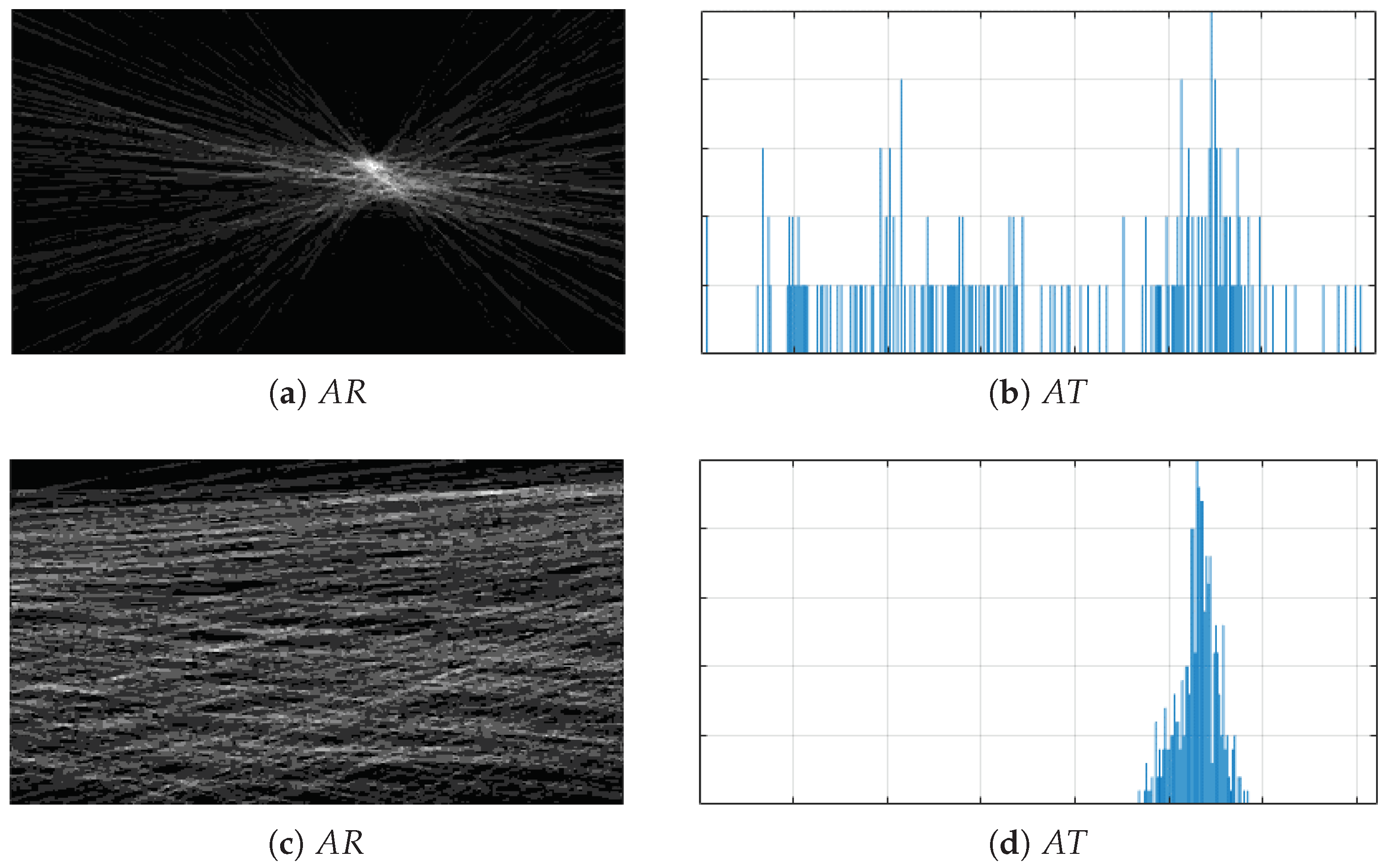

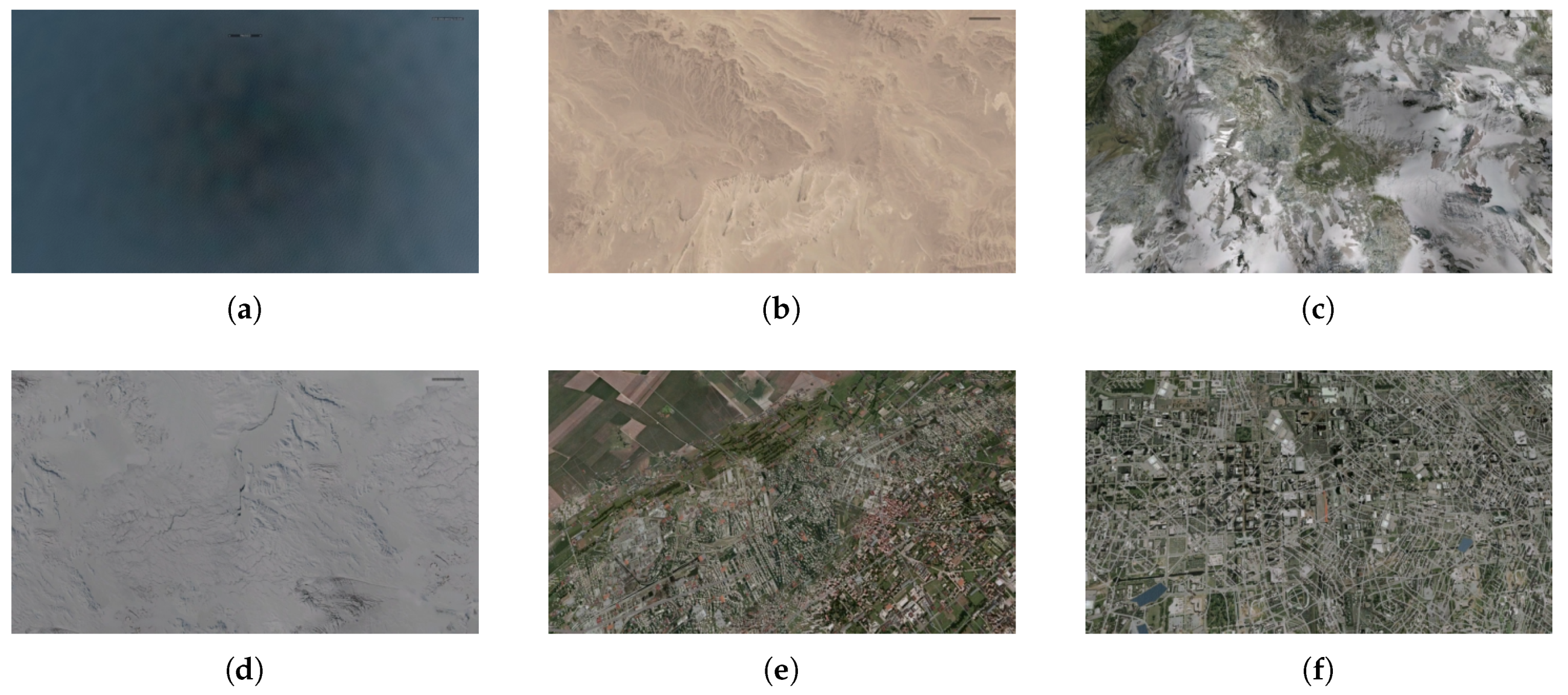
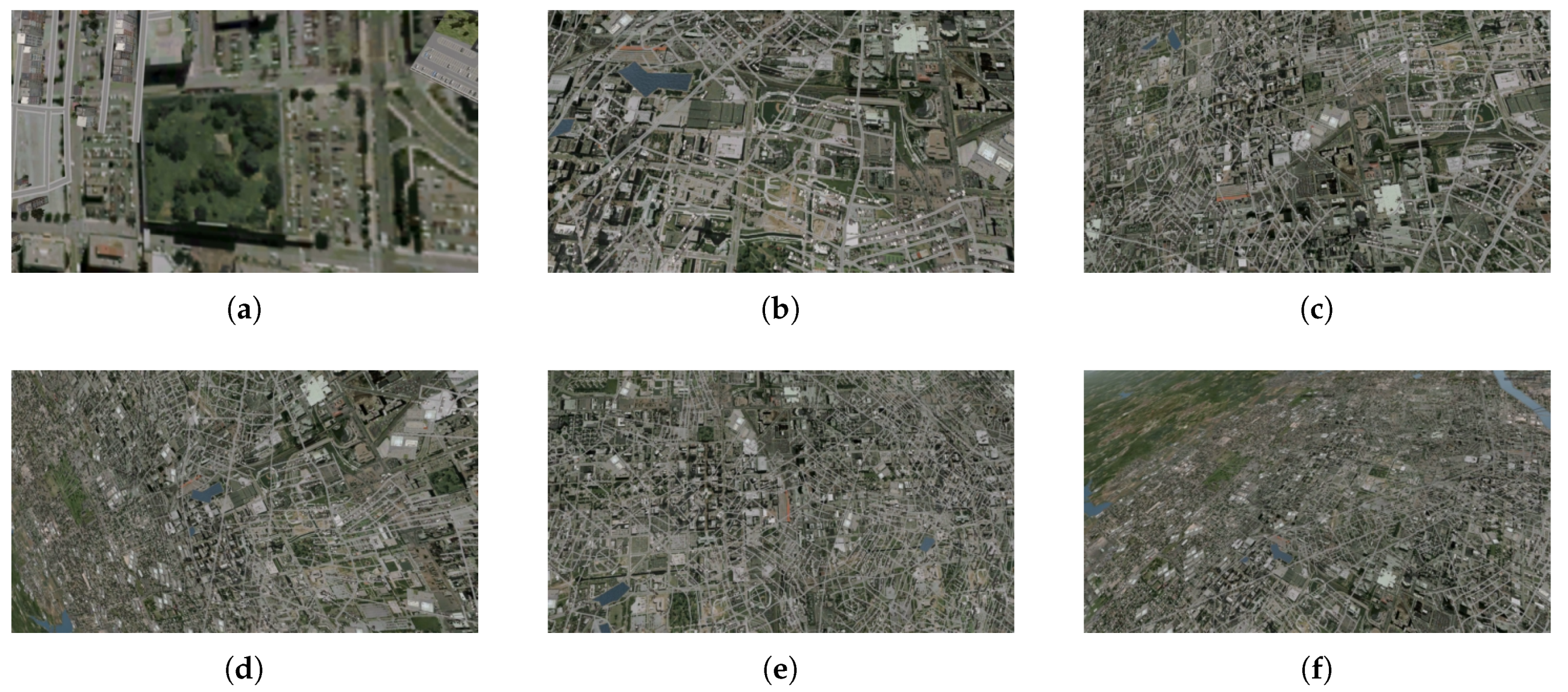





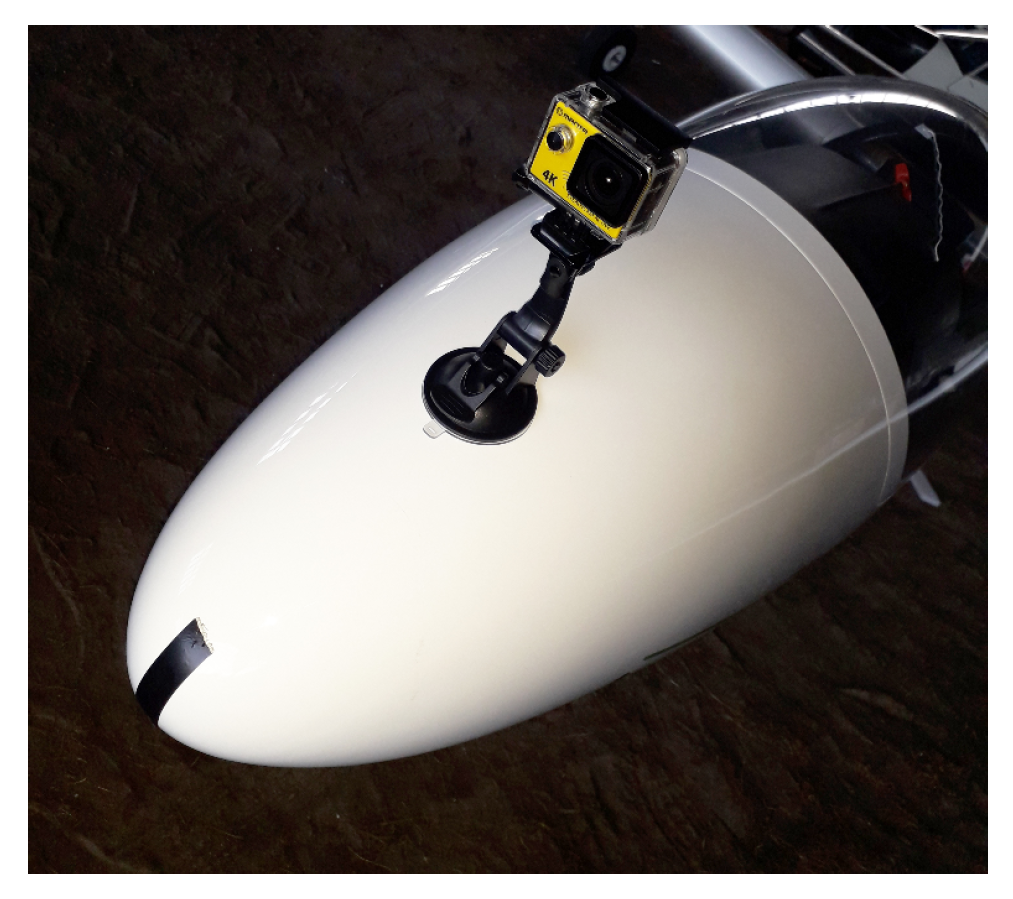
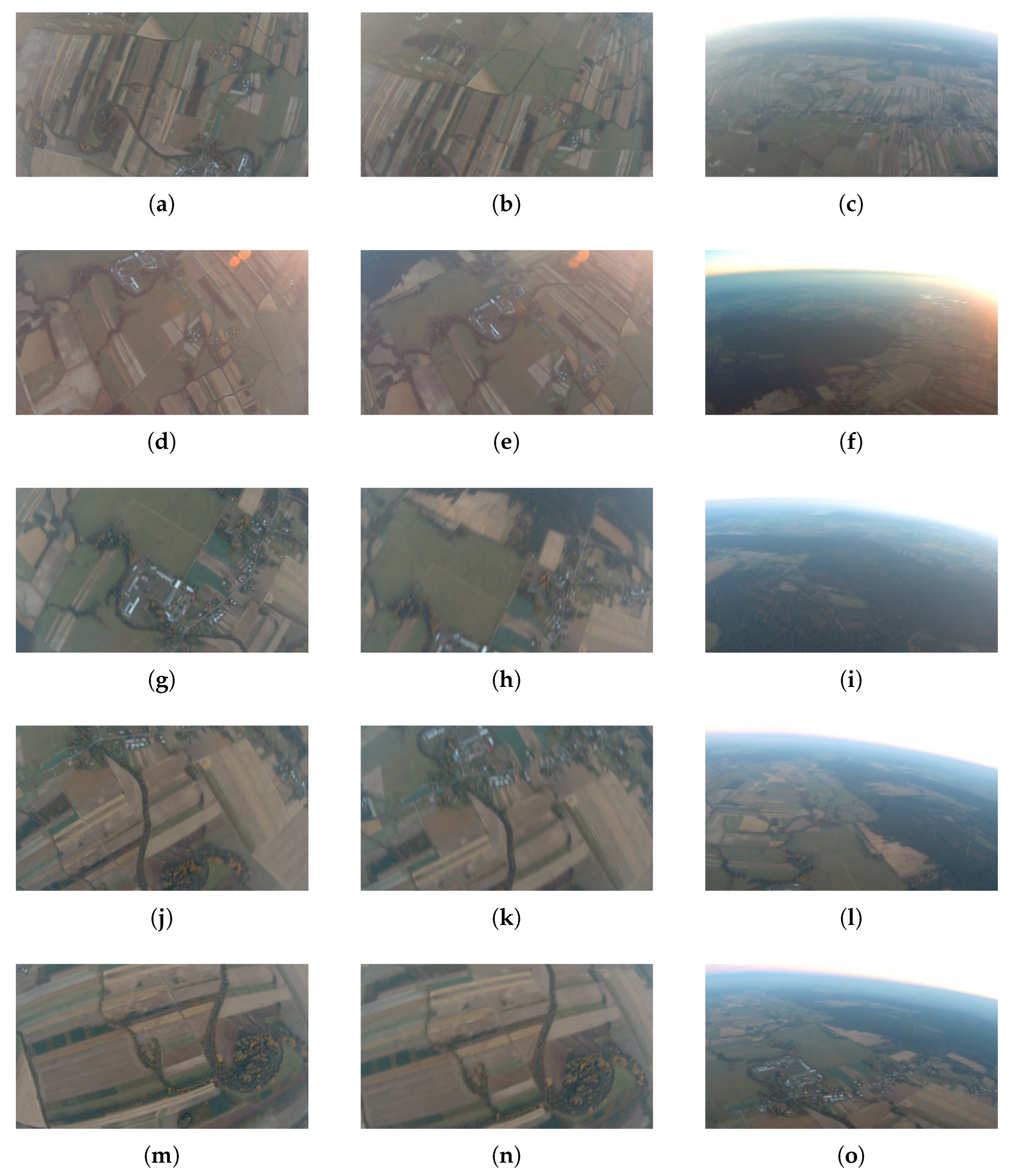
| Group 1 | Description | Change of time of day | |||||
| Goal | Examination of the dependence on the level and direction of lighting | ||||||
| Time of day | 6:00 | 9:00 | 12:00 | 15:00 | 18:00 | 21:00 | |
| Group 2 | Description | Change of location | |||||
| Goal | Examination of the dependence on the number of detected keypoints | ||||||
| Location | ocean | desert | mountains | arctic | urban1 | urban2 | |
| Group 3 | Description | Change of altitude | |||||
| Goal | Examination of the dependence on the number and density of detected keypoints | ||||||
| Altitude [ft] | 2000 | 4000 | 6000 | 8000 | 10,000 | 12,000 | |
| Group 4 | Description | Change of visibility | |||||
| Goal | Examination of the dependence on the visibility | ||||||
| Visibility [NM] | 0.3 | 0.4 | 0.5 | 3–5 | 5–10 | >10 | |
| Parameters Used while Detecting, Extracting and Matching SURF Keypoints | ||
|---|---|---|
| Name | Description | Tested Values |
| Strongest feature threshold [47] | 100, 200, ..., 1500 | |
| Number of octaves [47] | 1, 2, 3, 4 | |
| Number of scale levels per octave [47] | 3, 4, 5, 6 | |
| Length of feature vector [48] | 64, 128 | |
| Matching threshold [49] | 1, 10, 20, ... 100 | |
| Feature matching metric [49] | SAD, SSD | |
| Parameters used while removing faulty matches | ||
| k | Faulty match rejection threshold (Section 2.2, Equation (2)) | 1, 2, ..., 6 |
| Parameters used while determining the aircraft state | ||
| Threshold value for (Section 2.3, Equation (6)) | 0.05, 0.06, ..., 0.15 | |
| Deadzone width for (Section 2.3, Equation (6)) | 0.01, 0.02, ..., 0.05 | |
| Threshold value for (Section 2.3, Equation (7)) | 0.01, 0.02, ..., 0.10 | |
| Deadzone width for (Section 2.3, Equation (7)) | 0.01, 0.02, ..., 0.05 | |
| Permitted deviation from keypoints downward movement | 0, 5, ..., 45 | |
| (Section 2.3, Equation (7)) | ||
| Name | ||||||
| Value | 100 | 4 | 6 | 64 | 10 | SSD |
| Name | k | |||||
| Value | 1 | 0.13 | 0.02 | 0.10 | 0.03 | 40 |
| Group 1 | Time of day | 6:00 | 9:00 | 12:00 | 15:00 | 18:00 | 21:00 |
| video 1 | 0.93 | 0.88 | 0.91 | 0.83 | 0.91 | 0.96 | |
| video 2 | 0.91 | 0.92 | 0.94 | 0.86 | 0.78 | 0.91 | |
| video 3 | 0.96 | 0.85 | 0.80 | 0.93 | 0.88 | 0.91 | |
| Group 2 | Location | ocean | desert | mountains | arctic | urban1 | urban2 |
| video 1 | - | 0.74 | 0.99 | 0.82 | 0.92 | 0.91 | |
| video 2 | - | 0.97 | 0.91 | 0.71 | 0.79 | 0.96 | |
| video 3 | - | 0.89 | 0.99 | 0.85 | 0.97 | 0.80 | |
| Group 3 | Altitude [ft] | 2000 | 4000 | 6000 | 8000 | 10,000 | 12,000 |
| video 1 | 0.82 | 0.99 | 0.94 | 0.92 | 0.91 | 0.75 | |
| video 2 | 0.79 | 0.87 | 0.97 | 0.90 | 0.93 | 0.84 | |
| video 3 | 0.74 | 0.90 | 0.91 | 0.90 | 0.77 | 0.90 | |
| Group 4 | Visibility [NM] | 0.3 | 0.4 | 0.5 | 3–5 | 5–10 | >10 |
| video 1 | 0.89 | 0.82 | 0.91 | 0.92 | 0.82 | 0.88 | |
| video 2 | 0.86 | 0.90 | 0.88 | 0.90 | 0.82 | 0.93 | |
| video 3 | 0.76 | 0.95 | 0.94 | 0.89 | 0.92 | 0.80 |
| Flight video | 1 | 2 | 3 | 4 | 5 |
| Jaccard index | 0.85 | 0.89 | 0.92 | 0.93 | 0.94 |
© 2020 by the authors. Licensee MDPI, Basel, Switzerland. This article is an open access article distributed under the terms and conditions of the Creative Commons Attribution (CC BY) license (http://creativecommons.org/licenses/by/4.0/).
Share and Cite
Kapuscinski, T.; Szczerba, P.; Rogalski, T.; Rzucidlo, P.; Szczerba, Z. A Vision-Based Method for Determining Aircraft State during Spin Recovery. Sensors 2020, 20, 2401. https://doi.org/10.3390/s20082401
Kapuscinski T, Szczerba P, Rogalski T, Rzucidlo P, Szczerba Z. A Vision-Based Method for Determining Aircraft State during Spin Recovery. Sensors. 2020; 20(8):2401. https://doi.org/10.3390/s20082401
Chicago/Turabian StyleKapuscinski, Tomasz, Piotr Szczerba, Tomasz Rogalski, Pawel Rzucidlo, and Zygmunt Szczerba. 2020. "A Vision-Based Method for Determining Aircraft State during Spin Recovery" Sensors 20, no. 8: 2401. https://doi.org/10.3390/s20082401
APA StyleKapuscinski, T., Szczerba, P., Rogalski, T., Rzucidlo, P., & Szczerba, Z. (2020). A Vision-Based Method for Determining Aircraft State during Spin Recovery. Sensors, 20(8), 2401. https://doi.org/10.3390/s20082401







